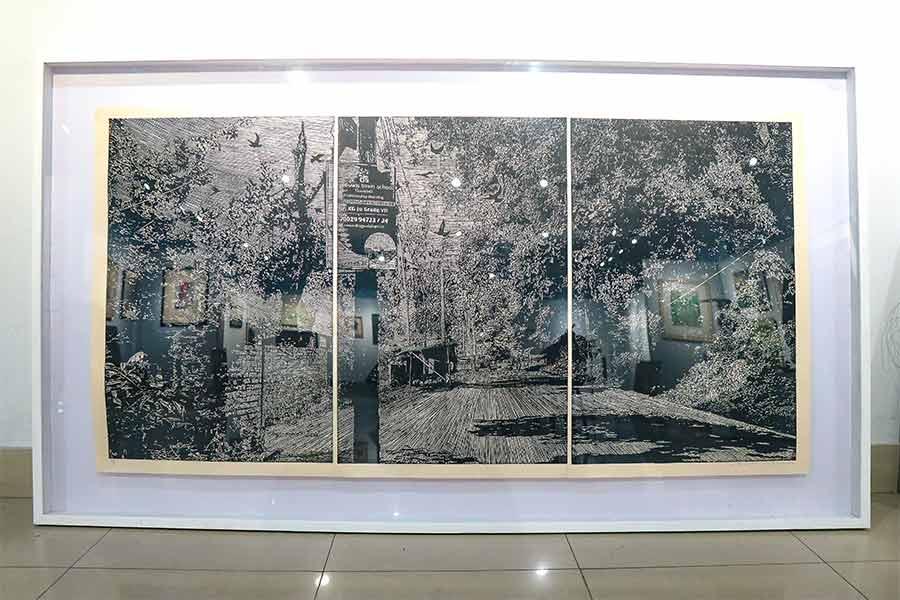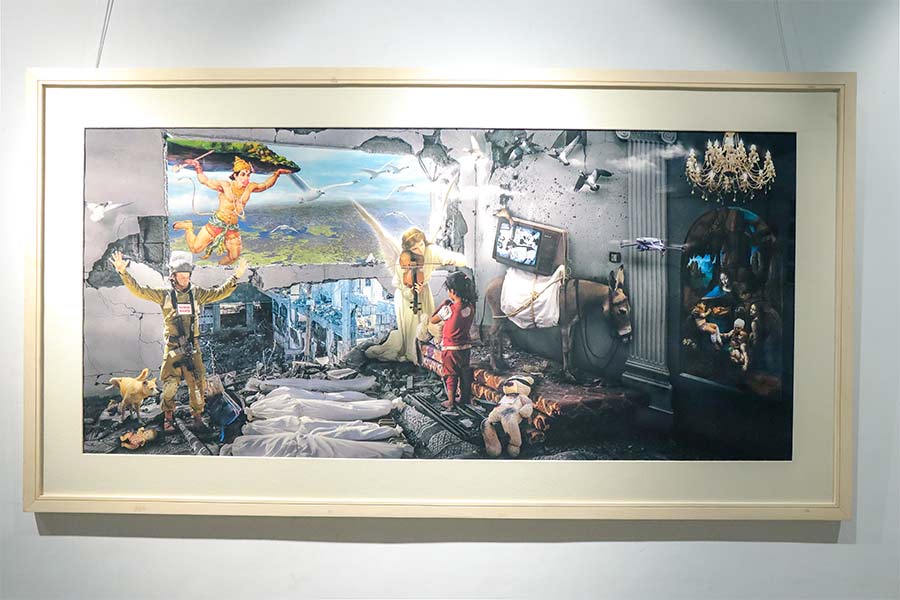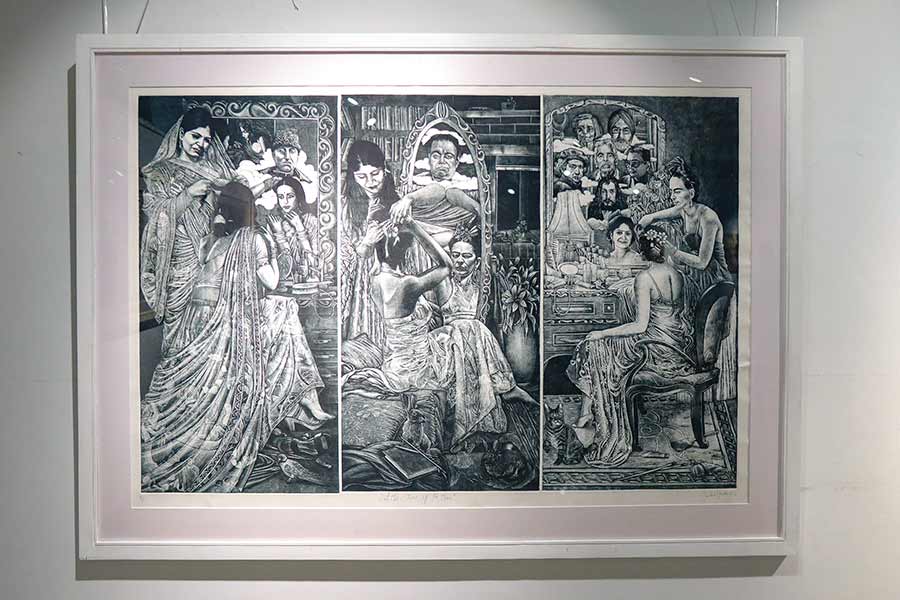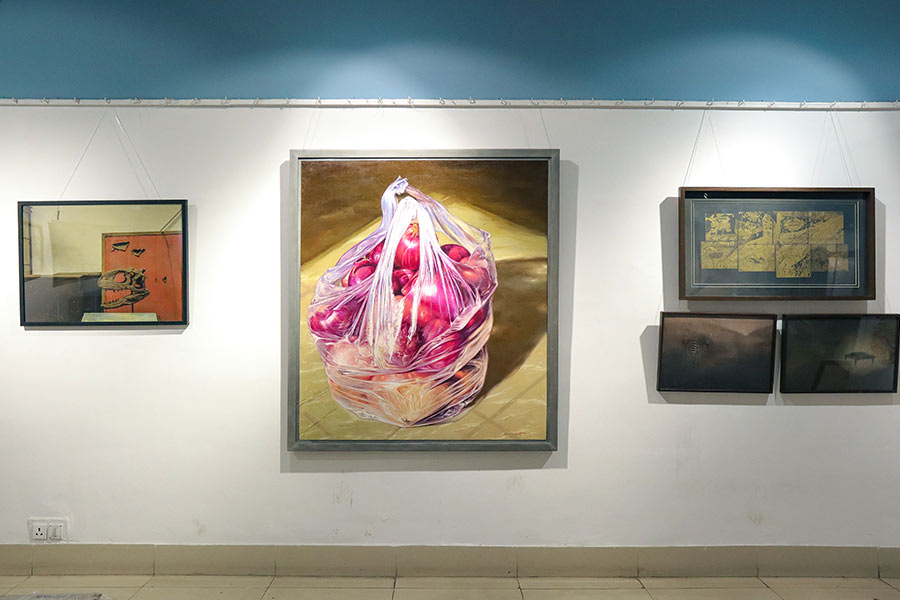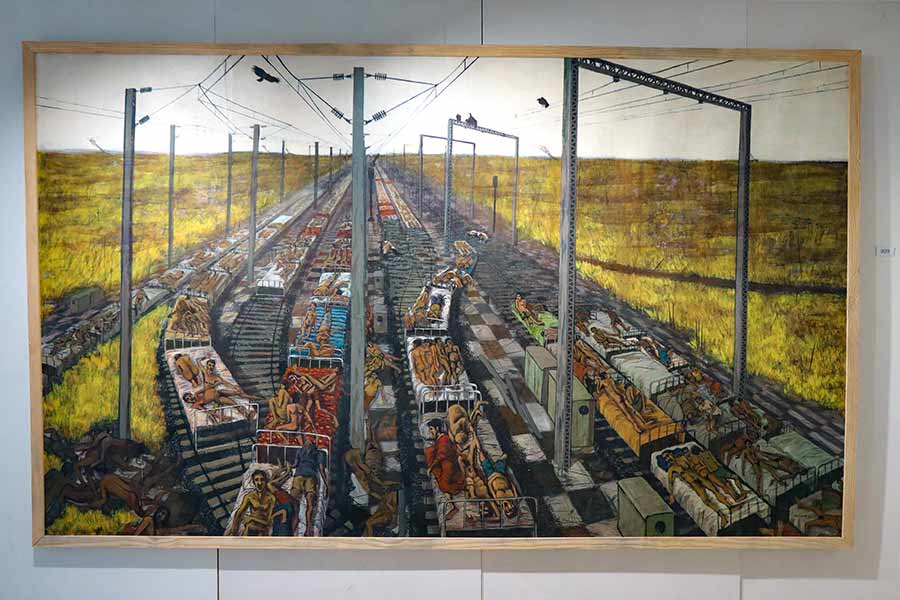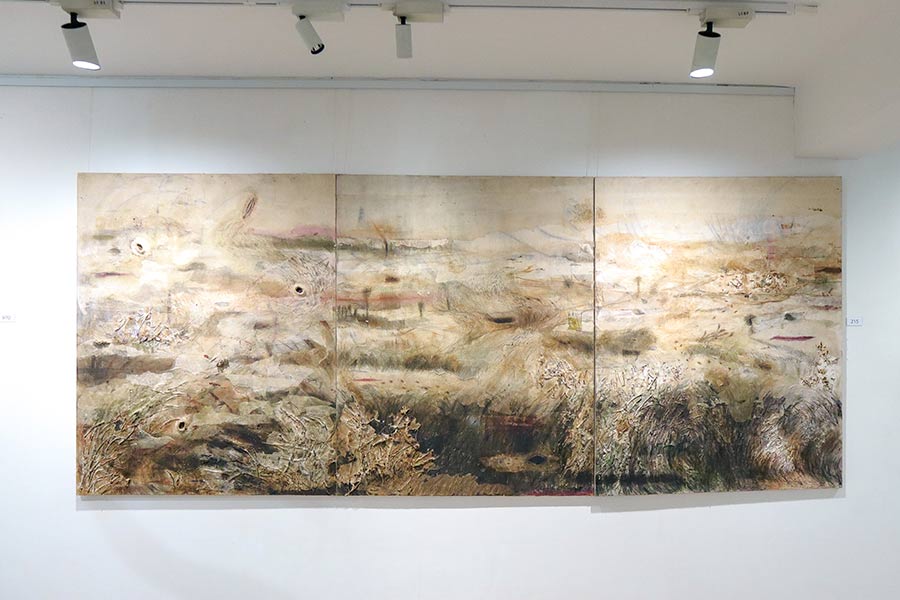It has been three years since the CIMA Awards 2022, organised and conducted with grace and bravery in the final throes of the pandemic. At that time, the artistic community, reeling in the aftermath of the deadly disease and the gradual re-entry into normal life, found ways to band together. With the support of the Centre of International Modern Art, the vision and work of more than 180 artists found their way to the larger community of art lovers, culminating in an edition of the Awards that will be remembered for years.
Now, three years later, “following the final exit of the pandemic, the artistic community of India has finally settled down, and we have progressed to the CIMA Awards 2025,” says Rakhi Sarkar, director, CIMA, and managing trustee, Art & Heritage Foundation. Her words resonate deeply the moment one steps through the doors of the Academy of Fine Arts — one of the two venues showcasing the artworks submitted for the CIMA Awards 2025.
CIMA has long been a beacon for artistic discovery, but this year, an unmistakable sense of the extraordinary pervades the experience. Even the pathway leading to the entrance of the Academy building, associated for decades with artistic excellence, seems charged with an air of anticipation, setting the stage for an exhibition that promises to challenge conventional notions of what defines great art.
The triennial CIMA Awards have expanded significantly since their inception a decade ago, both in reach and influence. “The awards arose from the need to talk about India and how contemporary artists related to it,” said Rakhi Sarkar. “In 2015, after 22 years of running CIMA, we felt the need to introspect; were we really serving the needs and prospects of this vast country, with its ancient history, legacy, challenges, exceptional complexities and diversity? Not really. We were merely serving the predilections of an urbanised populace and overlooking the vast reservoir of talent going largely unnoticed in other parts and pockets of the country. It was from this imperative that the idea of CIMA Awards was born.” Since then, the awards have grown into a crucial platform, reshaping the discourse around contemporary Indian art and putting the spotlight on artistic voices that might have otherwise remained unheard.
The 2025 edition of the CIMA Awards brings together the works of more than 200 artists from 22 Indian states, offering a diverse and expansive showcase of contemporary talent. Around 213 artworks — including paintings, sculptures, graphics, installations, digital, and new media art — are being exhibited across two venues: the Academy of Fine Arts (January 31 - February 18) and CIMA Art Gallery (January 31 - February 28).
Crucially, the awards place no restrictions on educational background or formal training, ensuring that self-taught artists have an equal opportunity to participate. While representation remains an area for growth — Rakhi Sarkar had noted that in 2022, over 75 percent of participants were male — the gradual and steady widening of the awards’ scope has led to a meaningful shift. This year, a significantly higher number of women artists are being exhibited, marking an essential step toward greater inclusivity and the recognition of true creative excellence.
Academy of Fine Arts: Natural interaction between space and art
The first hint of this becomes apparent in the thoughtful curation of the exhibition, particularly at the Academy of Fine Arts, where the venue’s old-world charm provides a fitting backdrop for the nature of the artworks on display. A striking feature is the artists’ inventive use of diverse materials and their strategic engagement with the space to present their works. Whether it’s Somen Debnath’s powerful sculptural installation titled Reformation (chainsaw carving on wood) or Chhering Negi’s stunning Rear Window (woodcut, set of 16), visitors are immediately drawn into an immersive encounter with the artists’ visions from the moment they step into the venue.
The devastation of the pandemic — particularly its deepening of poverty and social exclusion — emerges as a powerful theme in Sanjay Kumar Yadav’s COVID-19 (etching). Positioned intentionally within a distinct section of the Academy of Fine Arts, the piece, with its stark visuals of disease, grief, loss and helplessness, almost takes the viewer by surprise. The dialogue between space and artwork is seamless; the venue’s sparse, expansive interiors not only accommodate but amplify the themes and emotions embedded in the works on display.
In one room, Asif Imran's Mahanagar (The City) - Period Changes (digital print and drawing assembled in 3D boxes) compels the viewer to reckon with the unrelenting passage of time. Elsewhere, Nilmoni Raha’s Home Sweet Home (photographic montage) and Sushma Yadav’s Let Me Dress For Mine (etching, triptych) draw us uncomfortably close to questions of intimacy — our homes, our minds, and the very essence of our personhood. Here, the haunting spectres of war, religion and death intertwine with struggles of identity and self-perception, creating not just a space for reflection, but for an urgent, unsettling reckoning.
CIMA Gallery: Contemplative quiet and hard questions
The transition from the resonant, immersive environment of the Academy to the contemplative quiet of CIMA Art Gallery feels seamless, though the themes explored here remain just as pressing. While Anshul Maheshwari’s Guardians of the Two Worlds (brass and iron sheet) echoes the gallery’s more reflective atmosphere, other works introduce necessary disruptions to this tranquillity. Viewers are met head-on with a refusal to turn away from the question of what constitutes suffering in Kamalendu Paul’s Tragic Circus (acrylic, charcoal and Fevicol). Visuals of human bodies — are they families? Are they all islands? Are they both? — strewn across beds on railway lines compel one to confront the blurring of boundaries between the ideas of home, destitution, danger, open spaces, claustrophobia, public access and family, all of which constitute running themes in the daily lives of most Indians.
Abhijit Debnath’s Temporary House (drawing on paper, cloth, gamchha, lungi, object sculpture, video and sound), Suman Kabiraj’s Trap (installation of cotton threads, wood, painted glittered objects and small hard objects), Suvojit Roy’s It’s Raining by Collapsing House (wall painted by black japan and installed with tin, motor pump, bamboo and used utensil material) and Rimi Adak’s Untitled (mixed media on canvas) are among those that unsettle, reminding us how easily serenity can slip into complacency — challenging us to stay engaged, questioning, and aware.
Perhaps this, then, is the most significant takeaway from a CIMA exhibition that encapsulates the vast multiplicities of India’s artists: art, along with the spaces it occupies, has a way of posing unexpected questions — and in contemporary times, those questions often lead to answers that are anything but comfortable.
The CIMA Awards show is open 11am - 7pm at CIMA Gallery till February 28, and 12pm - 8pm every day at the Academy of Fine Arts till February 18


